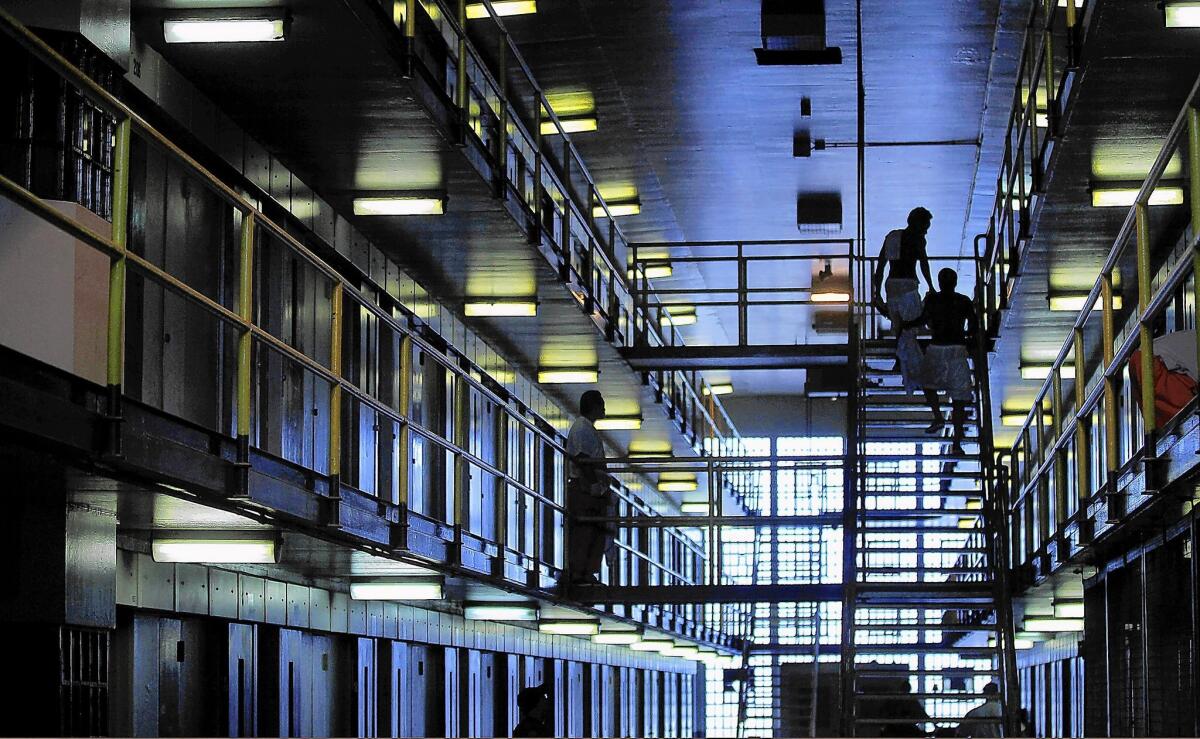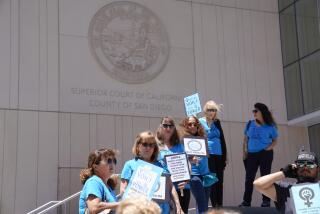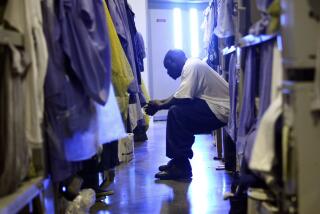State begins early releases of nonviolent prisoners

- Share via
SACRAMENTO — The state is releasing some low-level, nonviolent prisoners early as Gov. Jerry Brown complies with a federal court order to reduce crowding in its lockups — a turning point in the governor’s efforts to resolve the issue.
Inmates serving time for certain nonviolent crimes are being discharged days or weeks before they were scheduled to go free, a move that Brown had long resisted but proposed in January and was subsequently ordered by judges to carry out.
Eventually, such prisoners, who are earning time off their sentences with good behavior or rehabilitation efforts, will be able to leave months or even years earlier.
Prison workers, inmates’ lawyers and county probation officials said the releases began two weeks ago. Since then, San Bernardino County probation officers said, the number of felons arriving from prison has increased more than two dozen a week, or 30%.
L.A. County Deputy Probation Chief Reaver Bingham said he did not know how many prisoners had been released early to his jurisdiction.
Corrections officials confirmed that some inmates are being released “slightly earlier” but would not say how many or discuss the criteria used to determine who is eligible.
Officials are still working on the terms of other planned steps to reduce crowding, including making more inmates eligible for medical parole and a new release program for those older than 60.
In addition, some second-time offenders who have served half their sentences under the state’s three-strikes law could be eligible to leave.
Brown’s administration has estimated that 780 inmates could be released under those programs.
Sentence reductions were among the changes Brown offered to make as he sought two more years to reduce prison crowding to a level the judges deem safe. He wants to meet the jurists’ targets mostly by placing more felons in privately owned prisons and other facilities.
In February, the judges granted Brown’s request and ordered him to “immediately implement” the early releases and add parole options for prisoners who are frail, elderly or serving extended sentences for specific kinds of nonviolent crimes.
Analysts in Brown’s administration initially estimated that about 1,400 prisoners would be freed early over two years by being allowed to shave off as much as a third of their sentences with good behavior.
From prison, they follow the normal path to either state parole or county supervision, depending on the crimes they committed.
“Our first ‘Whew!’ moment was when we realized it was not anybody we wouldn’t [be getting] already,” said Karen Pank, a lobbyist for California’s 58 county probation departments.
More than 17,000 prisoners overall are potentially eligible for reduced sentences, according to the administration’s analysis.
Pank said the administration was negotiating with counties over whether to pay them additional money to supervise those who are sent to probation early.
Eligibility rules for the court-ordered parole programs have not been made public. A Board of Parole Hearings meeting on the matter was held last week behind closed doors, according to an agenda posted online by the board.
Ordinarily, such major changes to the state’s criminal justice system would be debated before the Legislature, but the federal judges have set aside those requirements.
“We don’t have many options to weigh in on the consequences of what is being put in place,” Pank said.
If California misses any of the court’s interim deadlines for easing crowding, a court-appointed officer has authority to order additional releases.
State lawyers said in an April 15 court filing that officials have already met the court’s June 30 benchmark, its first since the judges gave Brown extra time.
The judges set a limit on the inmate population of 143% of the prisons’ capacity; the state’s attorneys said the latest population was 141%.
Lawyers for prisoners argued in a court motion last week that the state was counting empty beds in a medical prison in calculating its capacity to house inmates, permitting other prisons to remain crowded. The corrections department contends the medical space should be included.
The latest prison population reports from the government show a women’s prison in Chowchilla is at 183% of its capacity. Corrections officials have confirmed an inmate lawyer’s report that as many as eight women at a time share dorm rooms that have a single toilet, sink and shower.
“There is one person on top of another.... It is a pressure cooker simmering,” said attorney Rebekah Evenson of the Prison Law Office, which represents inmates in class-action litigation over prison conditions.
Corrections spokeswoman Krissi Khokhobashvili said crowding in women’s prisons will ease when a private lockup in McFarland opens to take 520 female inmates.
In a conference call Tuesday with financial analysts, executives of the company that owns the McFarland facility said it would not be ready to take the first 260 women until the fall.
They said state officials had not yet requested the remaining 260 beds.
More to Read
Sign up for Essential California
The most important California stories and recommendations in your inbox every morning.
You may occasionally receive promotional content from the Los Angeles Times.











